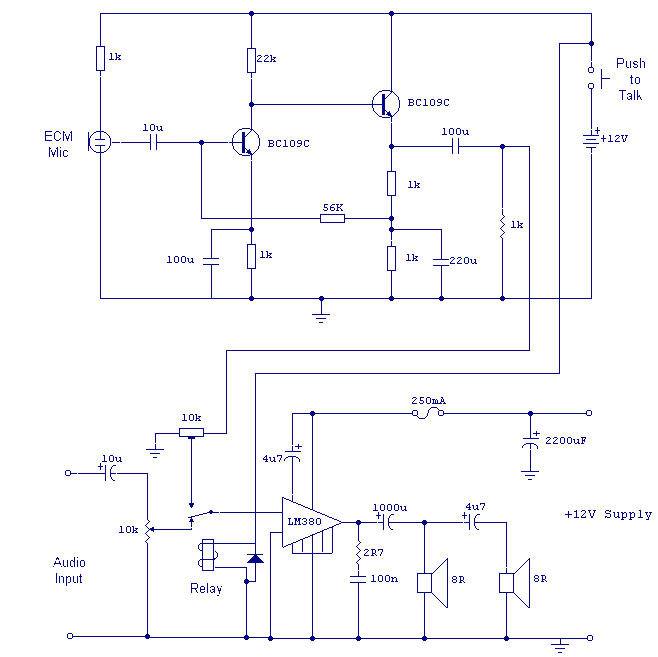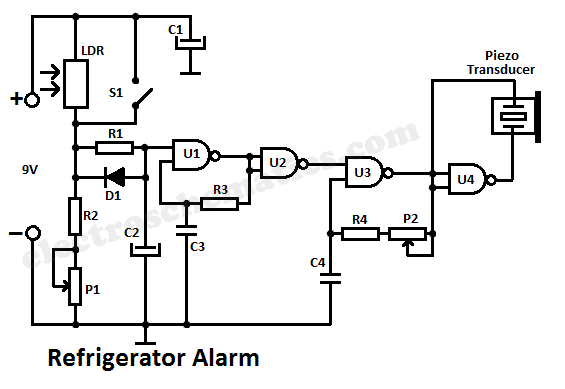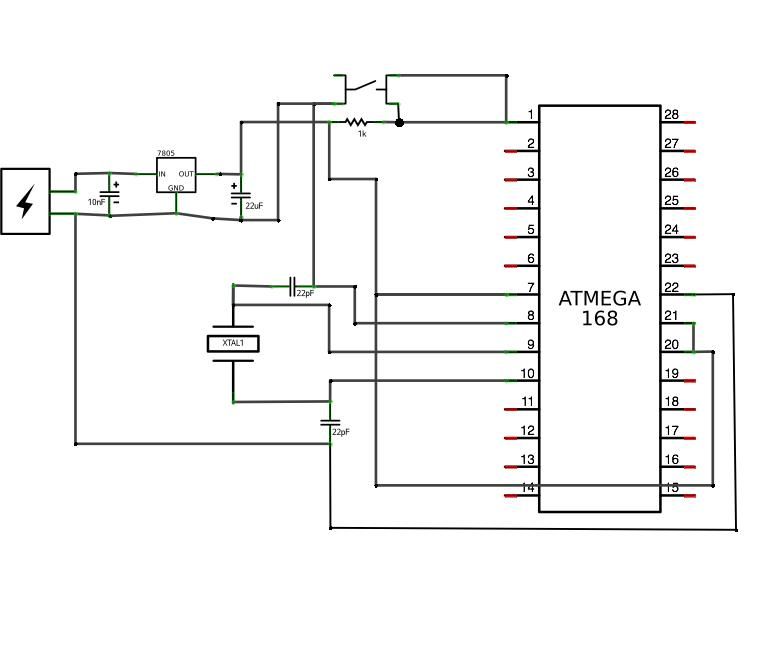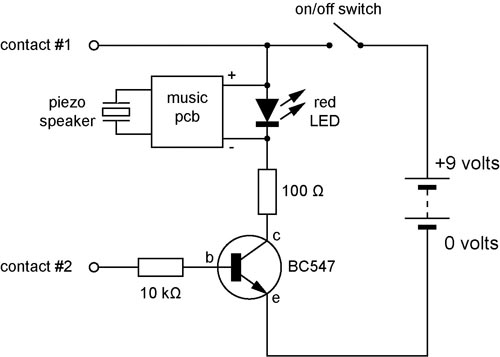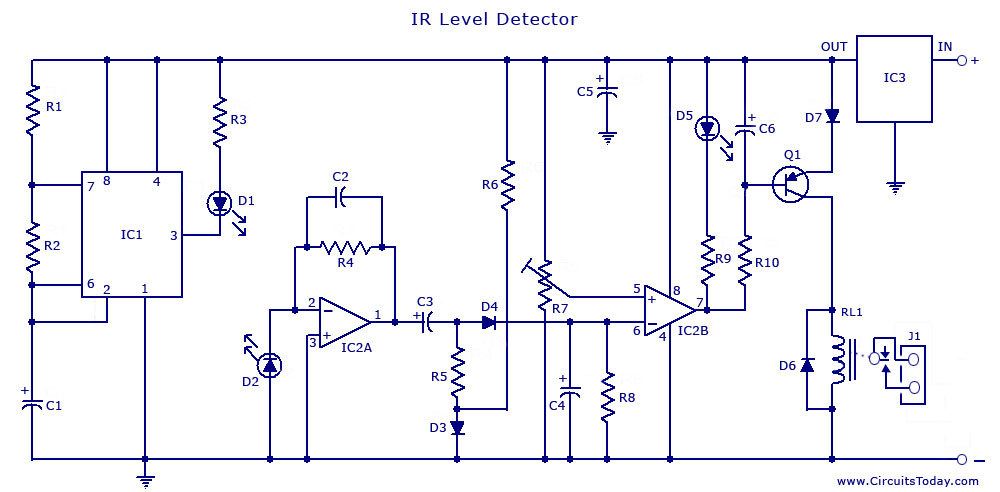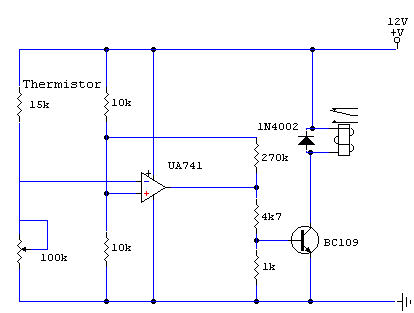
Rain alarm schematic circuit diagram
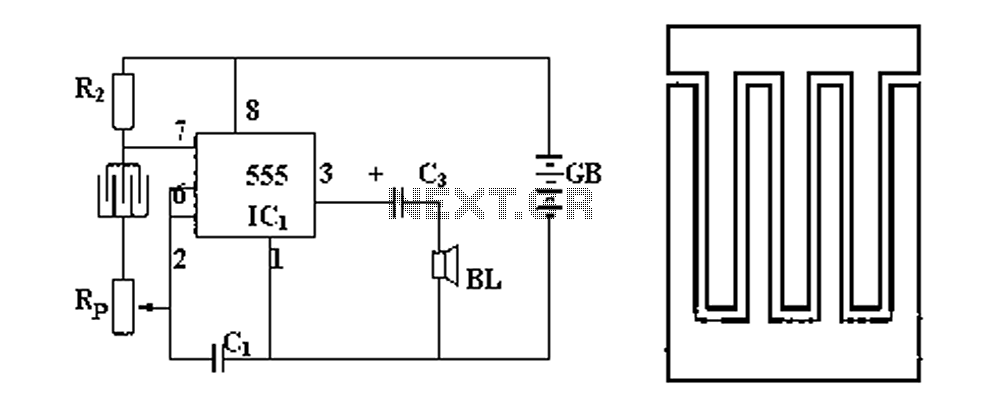
Figure 1 illustrates a circuit diagram related to an audio circuit that incorporates a resistance between two leads connected to a rain alarm probe. Figure 2 demonstrates the connection of a capacitor to the probe within the audio circuit. When raindrops contact the probe, the circuit activates and emits sound. This alarm can also serve as a versatile water alarm device.
The described circuit functions as a rain detection and alarm system, utilizing a simple yet effective design. The primary components include a probe, which is sensitive to moisture, and a resistor that forms part of the detection mechanism. When raindrops fall on the probe, they create a conductive path between the two leads, effectively completing the circuit.
The audio circuit is designed to generate an audible alert when the probe detects moisture. This is achieved through the integration of a capacitor, as depicted in Figure 2, which may serve to filter or stabilize the signal generated by the probe. The capacitor allows for the proper functioning of the audio output, ensuring that the sound produced is clear and effective in alerting users to the presence of rain.
In addition to its primary function as a rain alarm, the circuit can be adapted for various applications requiring water detection. By modifying component values or configurations, the design can be tailored to suit different environments or sensitivity requirements. This flexibility makes it a valuable solution for diverse water alarm needs, ranging from outdoor rain detection to indoor flood monitoring. Overall, the circuit provides an efficient and reliable method for water detection and alarm signaling.FIG. 1 is a circuit diagram of it, it is in the audio circuit from the resistance between the two leads to a probe to rain alarm. Fig. 2 with CCL to make a probe connected to t he audio circuit, when the rain drops on the probe, the circuit is turned on, the sound will be issued. The alarm can also be used as a variety of water alarm device. Figure 1 Figure 2
The described circuit functions as a rain detection and alarm system, utilizing a simple yet effective design. The primary components include a probe, which is sensitive to moisture, and a resistor that forms part of the detection mechanism. When raindrops fall on the probe, they create a conductive path between the two leads, effectively completing the circuit.
The audio circuit is designed to generate an audible alert when the probe detects moisture. This is achieved through the integration of a capacitor, as depicted in Figure 2, which may serve to filter or stabilize the signal generated by the probe. The capacitor allows for the proper functioning of the audio output, ensuring that the sound produced is clear and effective in alerting users to the presence of rain.
In addition to its primary function as a rain alarm, the circuit can be adapted for various applications requiring water detection. By modifying component values or configurations, the design can be tailored to suit different environments or sensitivity requirements. This flexibility makes it a valuable solution for diverse water alarm needs, ranging from outdoor rain detection to indoor flood monitoring. Overall, the circuit provides an efficient and reliable method for water detection and alarm signaling.FIG. 1 is a circuit diagram of it, it is in the audio circuit from the resistance between the two leads to a probe to rain alarm. Fig. 2 with CCL to make a probe connected to t he audio circuit, when the rain drops on the probe, the circuit is turned on, the sound will be issued. The alarm can also be used as a variety of water alarm device. Figure 1 Figure 2
